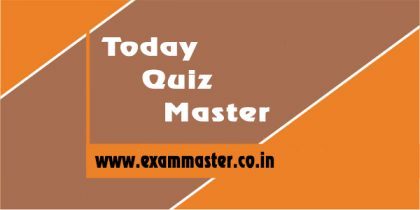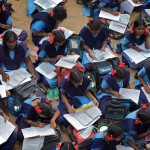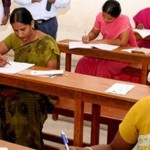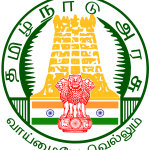
1. In which year Dupleix, the French Governor of Chandernagar was promoted as Governor of Pondicherry?
A) 1735 B) 1740
C) 1741 D) 1744
Explanation : Ans : (C)
I. Dupleix was born in France on January 23, 1697. He made several voyages to the America and India, and in 1720 was named a member of superior council at Bengal. In 1730 he was made superintendent of French affairs in Chandranagore, the town prospered under his administration and grew into great importance.
His reputation procured him in 1742 the appointment of governor general of all French establishments in India.
II. Anandarangam Pillai Diary provided valuable information of events that took place in Pondicherry under Dupleix. Anandarangam Pillai was a wealthy merchant who worked as the Chief Dubhashi (one who knows two languages) under Dupleix.
III. First Carnatic War (AD. 1746 – AD. 1748):
This war was an echo of the Austrian war of succession. In this First Carnatic War, the English and the French took opposite sides. They began to fight in India in 1746. Dupleix, the French Governor of Pondicherry had an ambition to establish French power in India.
Dupleix wanted to make the French Power supreme in South India. When the war started in Europe, Dupleix sent an appeal to La Bourdonnais, the Governor of Mauritius to capture Madras. He besieged Madras and captured it in 1746.
The Nawab of Carnatic Anwaruddin did not like this. So he sent an army against the French. At Santhome on the banks of the river Adayar. Anwaruddin’s army was defeated.
Then Dupleix tried to capture Fort St. David from the English but failed. Later the English attacked Pondicherry but the French successfully defended the city. In 1748 the war of Austrain Succession came to an end in Europe. So the Carnatic war also came to an end in India.
The First Carnatic War came to an end by the treaty of Aix-la-Chappelle (1748) As a result the English got back Madras.
IV. Second Carnatic War (AD. 1748 – AD. 1754) :
The Second Carnatic War was connected with the succession disputes between the Nizam of Hyderabad and the Nawab of Carnatic.
When there was a fight for throne of Hyderabad, Nazir Jung was supported by the British and Muzzafar Jung was supported by the French.
In the same way there was a fight for the throne of Carnatic. Anwar-ud-din was supported by the British and Chanda Sahib was supported by the French.
In the Battle of Ambur Anwar-ud-din got defeated.
In Hyderabad, both Muzzafar jung and Nasir Jung died.
The French were able to raise Salabat Jung to the throne and got Northern Circars in return.
The Hero of Arcot, Robert Clive defeated Chanda Sahib and made Mohammed Ali as the Nawab of Arcot.
V. The French fortunes were now at an ebb as their army and its generals had proved unequal to their English counterparts. In the end, the French Government, weary of the heavy expense of the war in India and fearing the loss of its American colonies, initiated peace negotiations and agreed in 1754 to the English demand for the recall of Dupleix from India. Dupleix left Pondicherry in 1754.
The Second Carnatic war came to an end with the Treaty of Pondicherry in 1754.
2. The earliest evidence of man in India is found in
A) Nilgiris B) Siwalik hills
C) Nallamala hills D) Narmada valley
Explanation : Ans : (D)
Evidence of hominin (immediate ancestors of Homo Sapiens) fossil is rare in India. The only rare hominin fossil was found in Hoshangabad in M.P. A fossil was discovered in Athirampakkam. but now not available.
A hominid Skull cap was found in a basal conglomerate deposit in 1982. It is considered to represent the Archaic Homo Sapiens.
In Narmada Vally, animal fossils of pre-historic elephant skull was discovered. Skulls of wild cattle and of great horse-like animal were also found. The teeth of horses or asses and of water buffalo were found. 17 animal hoof prints have been uncovered at Athirampakkam.
3. Who was the author of “Yoga Darsana” ?
A) Gautam Rishi B) Kannada Rishi
C) Badarayana D) Patanjali
Explanation : Ans : (D)
Yoga Darsana comprises of the Yoga Sutra of Patanjali with the commentary of Vyasa. The Yoga Sutras of Patanjali are foundational text of Yoga. The Yoga Sutras are an enormously influential work on yoga philosophy and practice.
4. Find out the wrongly matched from the following :
A) Prohibition of – Article 15
Discrimination on
grounds of religion,
race, caste, sex or
place or birth
B) Right to Association – Article 19
C) Right to Protection – Article 14
of life
D) Right of Constitutional – Article 32
Remedies
Explanation : Ans : (C)
Article 14 states that “the State shall not deny to any person equality before the law within the territory of India”. Broadly speaking, it means the equality of all in the eyes of law. All persons are equally subject to the ordinary laws of the land administered by the ordinary courts of law. It aims at mitigating cruder forms of social inequality practiced over centuries.
Article 15 states that Right to equality also provides that no citizen can be subjected to any disability on the ground of race, religion, sex, or place of birth in such matter as access to places of public entertainment, use of public wells, tanks, roads etc.
Article 19 of the constitution now provides six freedoms, namely :
1. right to freedom of speech and expression
2. right to assemble peaceful and without arms
3. right to form associations or unions
4. right to move freely throughout the territory of India
5. right to reside and settle in any part of the territory of India
6. right to practise any profession or to carry on any occupation trade or business.
Article 32 states that a
citizen can move to Supreme Court by appropriate proceedings for the
enforcement of rights conferred on him by the constitution. The Supreme Court has the power to issue
Writs in the nature of
habeas corpus, mandamus, prohibition, quo warranto and
certiorari, which ever may be appropriate for the enforcement of any of
rights conferred by the constitution. The right guaranteed by the article shall
not be suspended except or otherwise provided by the constitution. In case of
violation of fundamental rights, individual has the right to move the Supreme
Court by an appropriate method and the Supreme Court has the power to issue
writs, as mentioned below, which may be appropriate for enforcement of any of
the fundamental rights.
5. The body that elects the Indian President is
A) Parliament
B) Judiciary
C) Electoral College
D) Legislative assembly
Explanation : Ans : (C)
The President : Part V, Chapter I, Article 52 to Article 62 of the constitution deals with the President of India. The Article 52 of the constitution explicitly states, “There shall be a President for the Union of India”. So the President along with Rajya Sabha and Lok Sabha is a part of legislature. The President besides being the Chief Executive of the State also supervises the general administration. Article 53 clearly states that the executive powers of the Union shall be vested in the hands of the President. In India, the president is a nominal executive and discharges his duties as constitutional head of the state, though the day to day administration is run by the real executive comprising of the Prime Minister and the Council of ministers, it is carried out in the name of the President. The 44th amendment to the constitution curtailed the powers of the President and made him to act on the advice of the Council of ministers.
Election :
The President is elected indirectly by an electoral college consisting of :
elected members of both Houses of Parliament ; and
elected members of the Legislative Assemblies of the States. (Note : The States include NCT of Delhi and Puducherry).
The election rule for the President and the Vice President 1952, which was amended in 1974 sets forth the following requirements for a person to contest for the post of the President.
(i) A contestant’s name must be proposed and supported by 50 parliamentarians each for the election of President.
(ii) He/She should deposit `15000/- and
(iii) A declaration certifying that his / her name exists in the voter listing of his constituency is produced.





